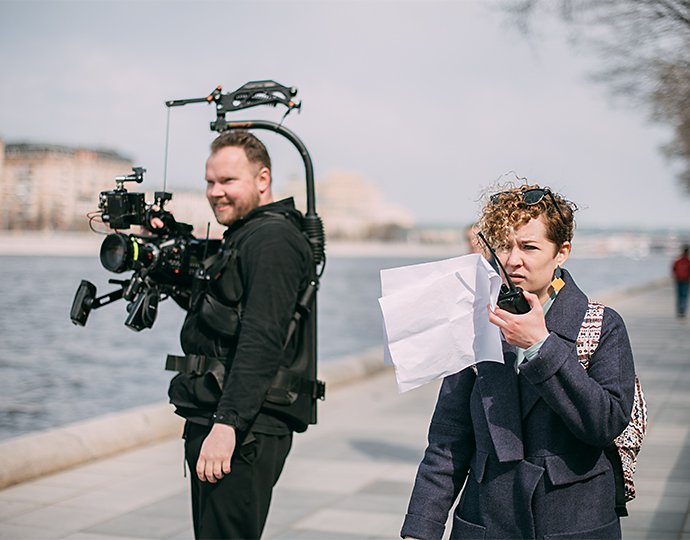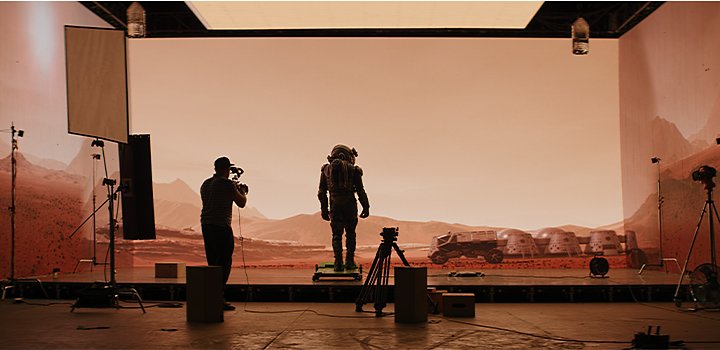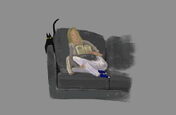How to write a screenplay.
From Hollywood to Bollywood, movies start with screenplays. Movie magic starts with the hard work of crafting movie scripts.

What is a screenplay?
It can take years to make a movie. And just like any other big project, it has to start with an idea. If a movie is like a building, then the screenwriter is the architect. “A movie script is the framework of the building,” says screenwriter Steven Bernstein. “It is your blueprint. It is your plan. All movies, from blockbuster feature films to film school short films, begin with a screenplay, and it’s the single most important document you’ll produce in the entire filmmaking process.”
Script writing is an industry as much as an art or craft. Professional screenwriters are expected to adhere to formatting conventions and industry standards. A member of a production company should be able to pick up a screenplay and immediately know where to find basic things like the title page, name of the screenwriter, and their Writer’s Guild of America (WGA) membership number. They should also be able to easily find a synopsis of the story, the main character, and genre.
Here are the basic elements of screenplays, according to Hollywood pros.
The three-act structure.
Most movie scripts, at least in the English-speaking world, follow a three-act structure.
The page-by-page action of a script should correspond with the minute-by-minute action of a movie. “Each page in script format is about one minute,” says filmmaker Whitney Ingram. “Ninety minutes is 90 pages.” There are occasional exceptions. Dialogue-heavy movies with fast-talking characters might say more than a page a minute, but in general, time and pages line up.
Act one
Act one introduces the characters and the central conflict of the story. It’s also where filmmakers need to draw in the audience and get them to care about the movie.
“You’ve got two important functions to begin any movie,” says Bernstein. “That is, hook your audience and get them to care about the characters.” Act one usually includes an inciting incident, in which the main character encounters an obstacle or challenge that they have to overcome and will spend the rest of the movie grappling with.
Act two
During act two the characters are enmeshed in the issues, challenges, and conflicts that take up most of the movie. Issues are ongoing but unresolved, and everything is up in the air. “The midpoint is right in the middle of the story when all of the issues have accumulated,” says Bernstein.
Act two is often where characters are at their lowest point, where villains usually get a few wins in, and where things can seem hopeless or unresolvable. Throughout act one and act two, a good screenwriter includes moments and elements that pay off in act three.
Act three
Act three sees the characters change, rise to a challenge, and ultimately overcome or succumb to the forces that have descended upon them. Act three is when the characters face the movie’s central challenge. It’s when heroes storm the castle, detectives crack cases, and romantic leads give passionate speeches confessing their love. It’s also where other, smaller seeds that you’ve planted throughout the screenplay pay off.
“The key to good screenplays is that you set up all these little nuggets or gems that are paid off in the third act,” says Bernstein.
Beyond the three-act structure
The three-act structure is a guideline and a convention, not a rule. Many filmmakers go beyond it and tell stories that do not have clear first, second, or third acts, or even clear characters or conflict. “I’d argue that the function of art is to give observers new eyes to see the world,” says Bernstein. “You should be free of mind in your approach not only to content, but also to form.” It is possible to write an unconventional screenplay, but if you do, be intentional.


Screenwriting terms.
Screenwriting, like every profession, has its own specialized collection of terminology, slang, industry terms, and jargon. Here are a few terms you might find helpful:
Every scene in a script begins with a slugline — also known as a scene heading — a short description of where the scene takes place. Sluglines always indicate whether or not a scene is interior or exterior, where it is exactly, and time of day. A scene that takes place on Tatooine, for instance, would begin with a slugline like:
EXT – TATOOINE – DAY
A slugline inside the Death Star would look like:
INT – DEATH STAR – NIGHT
And so on.
Action lines are simple and declarative, and after you get them out of the way you can start describing the setting with action lines, which might sound like:
“Fade in on a desolate desert planet. We see R2-D2 and C3PO walking across the seemingly endless dunes.”
Action lines give readers an idea of what should be happening in the scene, and what the characters are doing when we see them.
Dialogue usually takes up most of a movie script. Dialogue has the character’s name above it and is usually written without quotation marks. It’s also written with large margins or is centered to set it apart on the page from action lines and other copy. For example, Han Solo bragging about the speed of his ship would be:
HAN
You’ve never heard of the Millennium Falcon? It’s the ship that made the Kessel Run in less than twelve parsecs!
Sometimes dialogue contains special instructions or notes in parentheses, like if a character is offscreen or doing a voiceover. Obi-Wan telling Luke to turn off his targeting computer could look like:
KENOBI (v.o.)
Use the Force, Luke.
Beat
Important events or moments in a screenplay are known as beats. “A story beat is some significant moment,” says Bernstein. “It’s when things can turn in some different direction.” Examples are a detective finding an important clue, an action hero getting injured, or the leads in a romantic comedy having a conflict or misunderstanding that drives them apart.
“The logline is the summation of the story in one sentence,” says Bernstein. A logline is often the first thing studio decision-makers hear about a movie, and screenwriters often start their screenwriting process with a logline and go from there. However, it’s always possible to change a logline after you’ve written a final draft.
Loglines often contain a hook. “Usually there’s some kind of irony in the logline,” says Ingram. That irony usually shows off how the film is different or unusual. “I’ve never known a film to sell on a logline,” says Bernstein, “except maybe Snakes on a Plane.”
Elevator pitches are a bit longer than loglines, but still short. An elevator pitch is a short description or synopsis of a project that usually takes up about 30 seconds, the length of an elevator ride. The elevator pitch for Hamlet would sound something like:
“The king dies, and his brother assumes the throne. The dead king’s son suspects that his father was murdered, and works to bring down his uncle.”
Obviously this leaves a lot out, but the focus is on describing the movie quickly.
A treatment is a written document that outlines the story and main ideas of a movie. It’s usually written in the present tense and sticks to the main story beats and big moments of the film. Treatments are usually much shorter than screenplays, but they can sometimes be up to 60 pages or so.
Once a film is in production, a shooting script is created. This version of the screenplay numbers the scenes to help all departments coordinate their work — especially helpful as most films are shot out of order (not chronologically based on the events of the screenplay).
For example, if a movie has several separate scenes that take place in a casino, the shooting script uses numbers to note that all of those scenes can be filmed in the same block of time, even if they appear at different times in the movie.
Colored pages are used in shooting scripts to help teams ensure they are working with the most recent version. Any updates are added to shooting scripts in a new color.

Movie magic on the page.
Film production is a long process that can take years, and it often involves hundreds if not thousands of dedicated professionals. But every blockbuster starts with a movie idea from the script writer. A film script is a guide to collective projects, like a blueprint for a building — or a treasure map for a voyage of discovery.
Contributors
Do more with Adobe Premiere Pro.
Make visually stunning videos virtually anywhere — for film, TV, and web.
You might also be interested in…
Whip pans: Explore this simple filmmaking technique.
Whip your next video clip into shape with a whip pan shot.
Get B-roll footage that makes video editing easier and helps you keep your audience engaged.
How to add cinematic black bars to your video.
Learn how to make your own letterbox overlay in Adobe Premiere Pro.
How to get started on storyboarding.
See how this artistic storytelling skill helps bring ideas to the big and small screen.
Get Adobe Premiere Pro
Create flawless productions with the industry-leading video editing software.
7 days free, then ฿876.33/mo. inclusive of VAT



